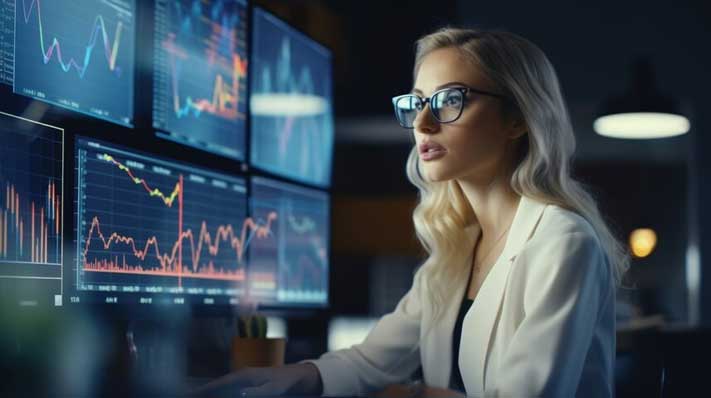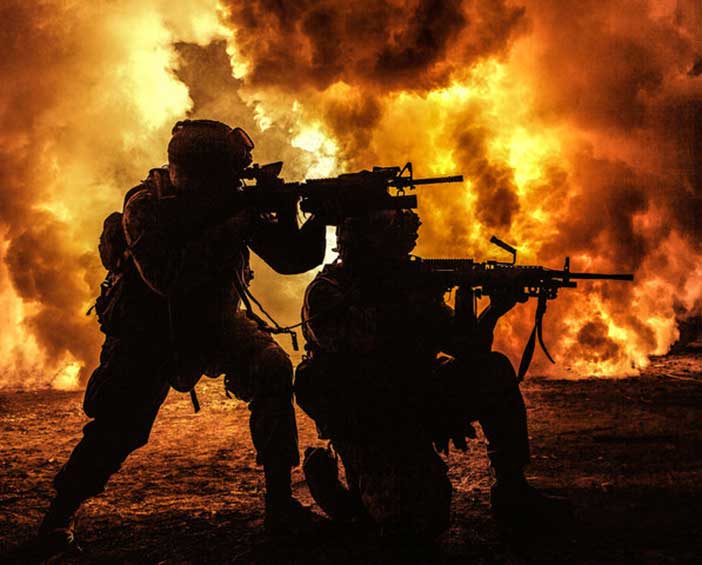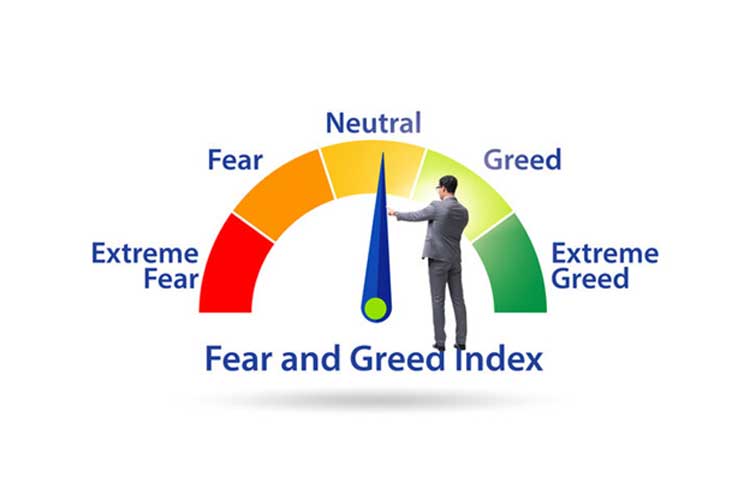
Futures trading has gained significant popularity over the past decades due to several key factors:
- Globalization: The increasing interconnectedness of global markets has led to greater participation in futures trading by individuals, institutions, and corporations from around the world. This globalization has expanded the range of available futures contracts and increased market liquidity.
- Technology Advancements: The development of electronic trading platforms and high-speed internet connectivity has made futures trading more accessible and efficient. Traders can now execute trades, access real-time market data, and manage risk from anywhere with internet access, reducing barriers to entry.
- Risk Management: In an uncertain economic environment, futures contracts offer effective risk management tools for businesses, investors, and speculators. Hedging against price fluctuations, interest rate changes, currency movements, and commodity price volatility has become crucial for managing financial exposure.
- Portfolio Diversification: Investors are increasingly seeking diversified portfolios to reduce risk and enhance returns. Futures contracts allow investors to gain exposure to a wide range of asset classes, including commodities, currencies, stock indices, interest rates, and energy products, diversifying their investment portfolios.
- Speculative Opportunities: Traders and investors are attracted to futures markets for speculative purposes, aiming to profit from price movements in various asset classes. The leverage offered by futures contracts allows traders to amplify potential gains (and losses), making futures trading appealing for those seeking high-risk, high-reward opportunities.
- Regulatory Environment: Regulatory reforms and improvements in market oversight have enhanced transparency, fairness, and stability in futures markets. Clearinghouses play a crucial role in mitigating counterparty risk and ensuring the integrity of futures contracts, increasing investor confidence in these markets.
- Inflation Hedge: In times of inflationary pressures, commodities and inflation-linked assets like gold and energy futures serve as effective inflation hedges, preserving purchasing power and providing portfolio diversification benefits.
- Education and Awareness: The availability of educational resources, market analysis tools, and trading seminars has contributed to greater awareness and understanding of futures trading among retail investors and traders. Online communities, forums, and social media platforms also facilitate knowledge sharing and idea generation in futures markets.
Overall, the combination of technological advancements, globalization, risk management needs, speculative opportunities, regulatory improvements, and investor education has fueled the growth and popularity of futures trading in the past decade, making it an integral part of the global financial landscape.
Futures trading is a fascinating aspect of the financial markets that involves trading contracts for the future delivery of commodities or financial instruments at a predetermined price. It’s a derivative trading instrument, meaning its value is derived from an underlying asset. Futures contracts are used by traders and investors to hedge against price fluctuations, speculate on future price movements, or gain exposure to various asset classes without directly owning the underlying assets.
What is Futures Trading?
In futures trading, two parties enter into a contract to buy or sell a specific quantity of an underlying asset at a predetermined price on a future date. The underlying asset can be commodities like gold, oil, corn, or financial instruments like stock indices, currencies, and interest rates. Futures contracts are standardized in terms of quantity, quality, expiration date, and delivery location, facilitating liquidity and ease of trading on organized exchanges.
Types of Futures Contracts
- Commodity Futures: These contracts involve physical commodities like metals (gold, silver), energy (crude oil, natural gas), agricultural products (corn, wheat), and livestock (cattle, hogs). Commodity futures are traded on exchanges like the Chicago Mercantile Exchange (CME) and the Intercontinental Exchange (ICE).
- Financial Futures: These contracts are based on financial instruments such as stock indices (S&P 500, NASDAQ), interest rates (Treasury bonds, Eurodollar), currencies (Euro, Yen), and individual stocks. Financial futures are traded on exchanges like the Chicago Board Options Exchange (CBOE) and the Eurex Exchange.
- Stock Index Futures: These contracts track the performance of a stock index like the S&P 500, Dow Jones Industrial Average (DJIA), or NASDAQ-100. They allow traders to speculate on the overall direction of the stock market without trading individual stocks.
- Currency Futures: These contracts involve the exchange of one currency for another at a specified price and date. Currency futures are used by traders and businesses to hedge against foreign exchange risk.
- Interest Rate Futures: These contracts are based on interest rates or interest-bearing instruments like Treasury bonds, Eurodollars, and government securities. Interest rate futures are used by investors to hedge against interest rate fluctuations.
- Energy Futures: These contracts involve energy commodities such as crude oil, natural gas, heating oil, and gasoline. Energy futures are influenced by geopolitical events, supply and demand dynamics, and weather patterns.
- Metal Futures: These contracts include precious metals like gold, silver, platinum, and industrial metals like copper and aluminum. Metal futures are affected by factors like global economic trends, geopolitical tensions, and industrial demand.
Sizes of Futures Contracts
Futures contracts have standardized sizes, also known as contract specifications, which vary depending on the underlying asset. Here are some examples of contract sizes for different futures contracts:
- E-Mini S&P 500 Futures: The standard contract size is $50 x the S&P 500 index value. For example, if the S&P 500 index is trading at 4000, the contract value would be $200,000 (4000 x $50).
- Crude Oil Futures (CL): Each contract represents 1000 barrels of crude oil. So, if the price of oil is $60 per barrel, the contract value would be $60,000 (1000 barrels x $60).
- Gold Futures (GC): The standard contract size is 100 troy ounces of gold. If the price of gold is $1800 per ounce, the contract value would be $180,000 (100 ounces x $1800).
- Eurodollar Futures: Each contract represents $1 million in notional value of 3-month Eurodollar deposits. So, if the interest rate is 2%, the contract value would be $20,000 ($1 million x 2%).
- Corn Futures: Each contract represents 5000 bushels of corn. If the price of corn is $5 per bushel, the contract value would be $25,000 (5000 bushels x $5).
Futures Brokers and E-Trading
To trade futures contracts, traders usually work with futures brokers who are registered with the relevant regulatory authorities and have access to futures exchanges. These brokers facilitate the execution of trades, provide market analysis, and offer trading platforms for clients.
With the advancement of technology, electronic futures trading (e-trading) has become increasingly popular. E-trading platforms allow traders to access futures markets from anywhere in the world using computers or mobile devices. These platforms offer real-time market data, order execution, risk management tools, and educational resources for traders of all levels.
Some popular e-futures trading platforms include:
- CME Globex: CME Group’s electronic trading platform offers access to a wide range of futures and options contracts, including equity index futures, interest rate futures, energy futures, and agricultural futures.
- ICE Futures: Intercontinental Exchange’s electronic trading platform provides access to energy futures, commodity futures, financial futures, and equity index futures.
- Eurex Exchange: Eurex’s electronic trading platform offers a variety of futures and options contracts, including equity index futures, interest rate futures, and volatility futures.
- E-Futures International: E-Futures International is a leading trading platform offered by E-Future.com, providing traders with advanced tools and technologies for accessing global futures markets. With E-Futures International, traders can execute trades, access real-time market data, utilize charting and analysis tools, and manage risk efficiently. The platform offers a user-friendly interface, customizable features, and connectivity to major futures exchanges worldwide, empowering traders to make informed decisions and capitalize on trading opportunities across a wide range of asset classes, including commodities, currencies, stock indices, and interest rates. E-Futures International is known for its reliability, speed, and comprehensive support, making it a preferred choice for both novice and experienced futures traders seeking a competitive edge in the financial markets.
Risk and Rewards of Futures Trading
Futures trading offers several benefits, including:
- Leverage: Traders can control a larger position with a relatively small amount of capital, amplifying potential profits (and losses).
- Diversification: Futures allow investors to diversify their portfolios by gaining exposure to different asset classes like commodities, currencies, and interest rates.
- Hedging: Futures contracts can be used to hedge against price risk, interest rate risk, currency risk, and inflation risk, protecting businesses and investors from adverse market movements.
However, futures trading also carries risks, such as:
- Leverage Risk: Leverage can magnify both gains and losses, leading to significant financial exposure and potential margin calls.
- Market Risk: Futures markets can be volatile, influenced by factors like economic data releases, geopolitical events, weather conditions, and supply-demand dynamics.
- Counterparty Risk: There’s a risk of default by the counterparty (the party on the other side of the futures contract), although central clearinghouses mitigate this risk to some extent.
- Liquidity Risk: Some futures contracts may have low liquidity, leading to wider bid-ask spreads and slippage during trade execution.
In summary, futures trading provides an avenue for traders and investors to participate in global financial markets, speculate on price movements, hedge against risk, and diversify portfolios. With a wide range of futures contracts available across different asset classes and the convenience of electronic trading platforms, individuals and institutions can access futures markets with ease. However, it’s important to understand the risks involved and employ proper risk management strategies when trading futures contracts.
Ready to start trading futures? Call US 1(800)454-9572 – Int’l (310)859-9572 email info@cannontrading.com and speak to one of our experienced, Series-3 licensed futures brokers and start your futures trading journey with E-Futures.com today.
Disclaimer – Trading Futures, Options on Futures, and retail off-exchange foreign currency transactions involves substantial risk of loss and is not suitable for all investors. Past performance is not indicative of future results. You should carefully consider whether trading is suitable for you in light of your circumstances, knowledge, and financial resources. You may lose all or more of your initial investment. Opinions, market data, and recommendations are subject to change at any time.
Important: Trading commodity futures and options involves a substantial risk of loss. The recommendations contained in this writing are of opinion only and do not guarantee any profits. This writing is for educational purposes. Past performances are not necessarily indicative of future results.
**This article has been generated with the help of AI Technology. It has been modified from the original draft for accuracy and compliance.
***@cannontrading on all socials.








